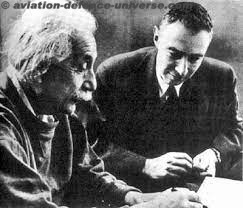New Delhi. 09 August 2022 . Second and last in the series of atomic bombings by the allied forces in World War II, US launched the greatest battle on Japanese soil from the skies on this day in 1945. A second atom bomb was dropped on Japan at Nagasaki, resulting finally in Japan’s unconditional surrender.
The devastation wrought at Hiroshima was not sufficient to convince the Japanese War Council to accept the Potsdam Conference’s demand for unconditional surrender. The United States had already planned to drop their second atom bomb, nicknamed “Fat Man,” on August 11 in the event of such recalcitrance, but bad weather expected for that day pushed the date up to August 9th. So at 1:56 a.m., a specially adapted B-29 bomber, called “Bock’s Car,” after its usual commander, Frederick Bock, took off from Tinian Island under the command of Maj. Charles W. Sweeney.
Nagasaki was a shipbuilding center, the very industry intended for destruction. It was dropped by parachute from an American B29 Bomber at 11:02 a.m Japanese time, 1,650 feet above the city. The explosion unleashed the equivalent force of 22,000 tons of TNT. The hills that surrounded the city did a better job of containing the destructive force, but the number killed is estimated at anywhere between 60,000 and 80,000 (exact figures are impossible, the blast having obliterated bodies and disintegrated records).
American airmen flying many miles from Nagasaki have said smoke from fires in the city was rising 50,000ft (15,240m).
Michie Hattori Bernstein was a 15-year-old schoolgirl when the bomb was dropped on Nagasaki. Speaking to History Channel she relived those moments, “When the bomb exploded, it caught me standing in the entrance to the shelter, motioning for the pokey girls to come in. First came the light — the brightest light I have ever seen. It was an overcast day, and in an instant every object lost all color and blanched a brilliant white. My eyes couldn’t cope, and for a little while I went blind.
A searing hot flash accompanied the light that blasted me. For a second I dimly saw it burn the girls standing in front of the cave. They appeared as bowling pins, falling in all directions, screaming and slapping at their burning school uniforms. I saw nothing for a while after that.
Immediately, a powerful wind struck me. It propelled me farther into the cave; then in an instant it threw me out the front entrance. I guess the shockwave hit the back of the cavern and bounced. It took me with it and others who had sought refuge in the shelter. We came tumbling out onto the ground.
What a terrible feeling! I could see nothing. My hands and face singed, intense pain gripped my body. I tried to walk a little and stumbled over a fallen tree. I lay there, not knowing for sure where I was or whether something else might happen to me.
When my senses, including my sight, began returning, I heard crying from the girls in front of the shelter. All, except one, were now standing and blowing on their skin. Looking at the one lying down, I saw her leg twisted at a crazy angle. To this day, we don’t know how it became broken. The face and hands of the other girls quickly turned bright red. I guess my being partially inside the cave provided some protection because my stinging began to disappear before long.”
Few are there to tell the tale of the horror which engulfed Nagasaki that day, but the world will keep remembering this day to reiterate the fact that war has done good to no one ever.
































































































































